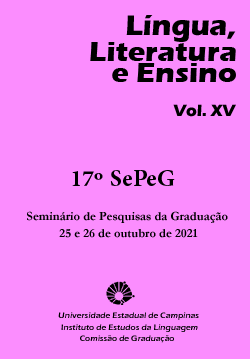The galvanized monster:
myth, religion and science in Mary Shelley's Frankenstein
Abstract
Starting from the book Frankenstein (1818), by author Mary Shelley, this study will analyze the relationship between three main elements in the work: myth, religion and science. Thus, this article follows a reading hypothesis that articulates this relationship between myth, religion and science in the work, found through various textual resources and external references, mainly based on certain literary influences by Mary Shelley, such as the work Paraíso Perdido by John Milton and the myth of Prometheus, and certain aspects of scientific method, galvanism and alchemy. In this way, this work seeks to understand how this relationship takes place, if it presents conflicts at its core, if it presents moral and ethical issues and if it is linked to the social and scientific discourse that circulated in the 19th century, especially at the time when Mary lived and wrote his magnum opus.Downloads
Published
2022-09-16
Issue
Section
Artigos

